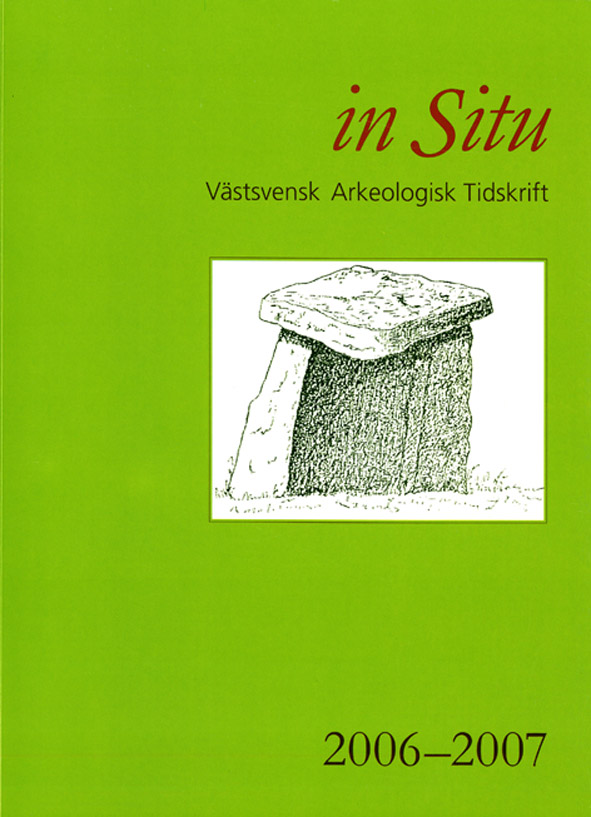Döden i Anderstorp socken
DOI:
https://doi.org/10.58323/insi.v7.13441Nyckelord:
Archaeology, MegalithsAbstract
The Iron Age dolmen is a rare type of grave spread only over a small geographical area; mainly along the border between the counties of Halland and Småland in the Southwest of Sweden. The Iron Age dolmen is constructed like a house out of four flat stones. Three stones stand as walls partly dug down into the ground and the fourth is placed on top like a roof. The opening created by the fourth missing wall always faces south. Only a handful of these dolmens have ever been excavated, one by the museum of Jönköpings län in 2007. By finds or by C14 analysis these graves have been dated to the period 400–650 AD. The dolmens either stand by themselves or they can be part of a surrounding stone setting. The free-standing dolmen is here compared to five other types of graves containing dolmens or similar constructions. It is argued in this article that they are all part of the same kind of burial rituals, reflecting a shared religious context.
Nedladdningar
Downloads
Publicerad
Referera så här
Nummer
Sektion
Licens
Författare som bidrar till In Situ Archaeologica har givit sitt medgivande att publicera sina artiklar under en Creative Commons-licens. Den ger tredje part vissa rättigheter till att nyttja materialet. Rättigheterna styrs av vilken licens verket är publierad under. Det åligger tredje part att sätta sig in i verkets creative common licens innan materialet används i eget syfte. Det är alltid författaren som har copyright till verket och allt nyttjande av tredje part förutsätter att ett tydligt erkännande ges till verkets upphovsperson, att en länk till licensen tillhandahålls.



